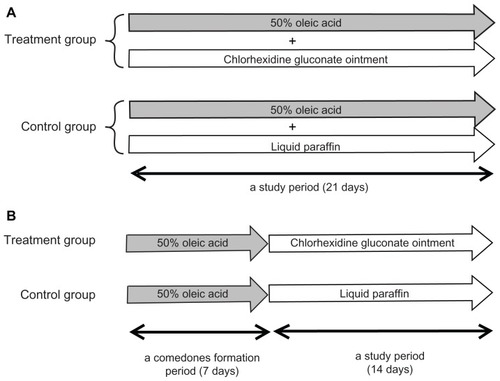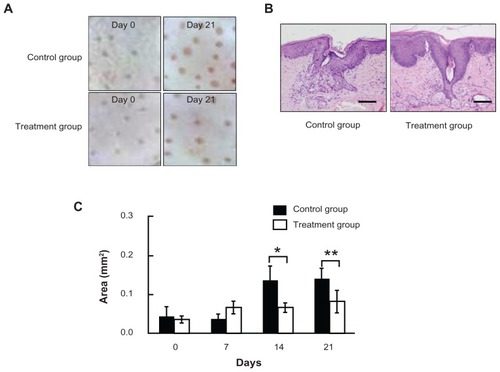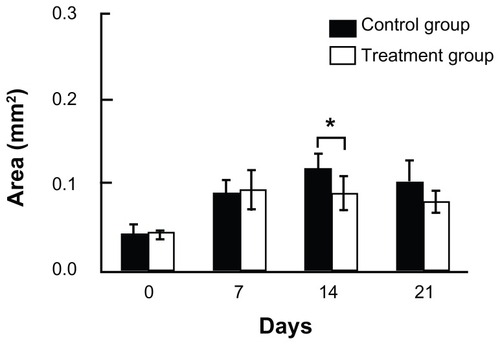Figures & data
Figure 1 Study design. (A) Inhibitory effects of chlorhexidine gluconate ointment on comedone formation. Once-daily application of 50% oleic acid, followed by application of the test substance (chlorhexidine gluconate ointment or liquid paraffin), was carried out for 21 consecutive days (n = 3 in each group). (B) Therapeutic effect of the ointment on preformed comedones.

Figure 2 Inhibitory effects of chlorhexidine gluconate ointment on comedone formation. (A) Dermatoscopic findings on days 0 and 21 for rabbit ear skin treated with 50% oleic acid and liquid paraffin (control group) or with 50% oleic acid and chlorhexidine gluconate ointment (treatment group). (B) Histological findings of hair pores treated with 50% oleic acid and liquid paraffin (control group), and with 50% oleic acid and chlorhexidine gluconate ointment (treatment group) on day 21. Bar = 200 μm. (C) Quantitative assessment of the inhibitory effects of treatment on comedone formation.

Figure 3 Therapeutic effect on comedones.
